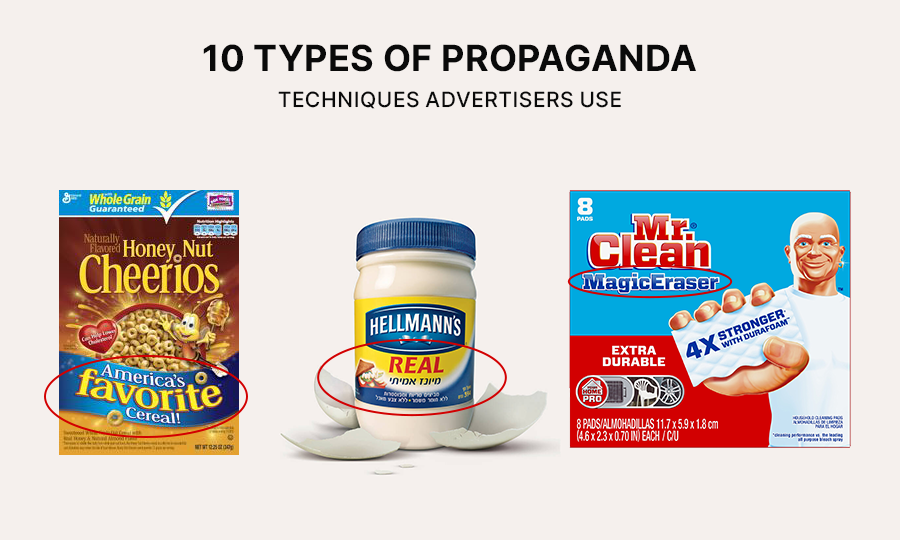At first thought, you may associate the word propaganda with the misinformation campaigns of the World War era— most will do!
But let’s try and think more neutrally— then it would just imply a method to promote or disseminate a particular idea or belief. And believe me when I say this, a powerful idea can fetch you customer engagement like never before.
Look around and you’ll find scores of marketing campaigns, both online and offline, utilizing propaganda to their best advantage.
But before you start applying propaganda delve deeper to understand how the concept of propaganda applies to advertising. That’s why we’ve curated this simple and comprehensive guide on the different types of propaganda techniques in advertising along with propaganda examples. Read on!
What Is Propaganda?
Propaganda seeks to alter the perception of the audience regarding any specific subject or person.
Thus, it helps promote a specific viewpoint that’s beneficial for enhancing brand reputation.
These attributes make it similar to a sales campaign in many ways. The impact that propaganda has on consumer perception and educational systems has been a subject of much debate. Do note that propaganda techniques use the exact multimedia formats as those in advertising to put the message across most successfully.
Why Is Propaganda Used In Advertising?
Now that you’ve had an insight into propaganda, you might be wondering how it’s significant in advertising.
Propaganda sometimes works to motivate or inspire people, and at other times, is used to create a specific impression (that the propagandist wants to make). The aim is to alter public opinion as much as possible.
For this purpose, propaganda either presents truth in versions that can be compared to real products or services, or frames a false idea. It can be quite effective and striking based on the belief that the propaganda aims to advocate. The target audience would then assume that they made an autonomous choice of their free will.
The Types of Propaganda Used In Advertising
For our list, we’ve picked the most effective types of propaganda techniques you’re likely to come across in various advertisements:
1. Bandwagon Propaganda
To start with, let’s talk about this propaganda technique that encourages the audience to join a desirable group of people involved in an interesting activity.
So, how does it achieve this goal?
A campaign is created to make the audience interested about owning a particular service or good. At the same time, it triggers an emotional need in people who wish to be part of a particular “bandwagon” of consumers.
Shown below is an ad example for bandwagon propaganda by the leading US cereal brand Cheerios, where they create a label “America’s favorite Cereal” to imply that citizens enjoy Cheerios more than any other cereal brand. The brand uses this notion to convey that the product is worth trying, especially to go with the no-cholesterol trend.
Simply put, this propaganda gives people the impression that the trend is fashionable or popular. Another aspect worth noting is that customers respond to such propaganda when they’re unsure about the best way to promote an idea.
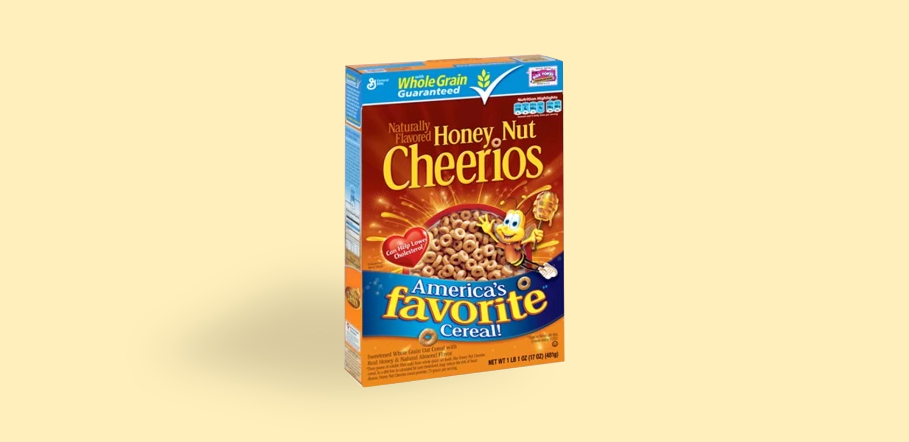
Some other examples of bandwagon propaganda are that of a fast-food chain using the caption “ be part of the league” to create a community of people visiting their restaurants.
2. Card Stacking Propaganda
In this propaganda technique, advertisers glorify a viewpoint while downplaying another, thereby creating blind spots. Card stacking propaganda ultimately drives people to prioritize the positive aspects of a product or service over everything else. Thus, the ad campaigns showcase or stockpile the best features of the products while concealing the not-so-good ones.
Card stacking is a widely practiced propaganda technique nowadays, especially in communication initiatives. After all, the audience needs to put in effort to know about the conflicting idea. Media professionals regard card stacking to be significant as it can persuade people to take a desired action or support various business or political viewpoints.
Card-stacking propaganda can also be regarded as a technique to leverage a point that’s supposedly good for you and to assert that it’s good for the rest of the audience too. For instance, you might not only say that the product is better than competing businesses but also pitch it as a cost-effective choice.
An interesting example is the detergent brand Mr. Clean that leveraged the technique for its new and improved product Magic Eraser Extra Power. It claims the product to be 50% stronger than the older version, which is likely to appeal to anyone looking for a powerful option. Thus, the audience may ignore the possibility that the product doesn’t actually offer the promised performance.
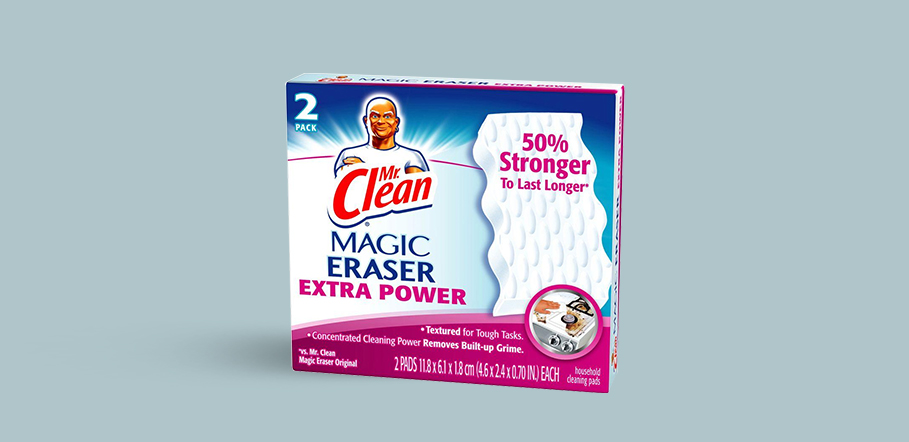
3. Stereotyping Propaganda
A stereotype is an assumption or idea regarding a group that’s applied to specific people. Ads that talk about stereotypes either support or challenge the idea. The target audience here are the people who want to be associated with the stereotypes or feel are targeted by them.
Note that the practice of gender stereotyping is discouraged in the industry, but it can actually be used to promote positive change.
An intriguing example I came across was Gillette‘s campaign titled “the best men can be”, It’s a re-idealized version of the classic ad “the best a man can get” which it cleverly redefines masculinity as presented in several other ads, urging the audience to rethink much hyped phrases like “men will be men“.
Another example of stereotype propaganda is a series of ads by Nike promoting their “Men vs Women Challenge”. These ads cite gender beliefs and push them to attract people to join a running challenge between men and women. Thus, the brand uses such stereotypes to propel women and men to compete against each other in the challenge.

4. Testimonial Propaganda
Next up is this straightforward tactic that attempts to sway the audience’s ideas and doesn’t give them the opportunity to consider evidence. Such propaganda often utilizes well-known or reputable personalities to strengthen the message. You can view testimonial propaganda as a sophisticated promotional strategy to enhance the demand for your product or service.
As a part of the ad, you can project satisfied clients and include detailed testimonials on their experience with the product or service. These are the best motivators for your potential customers. Do note that this format can be perfect for both social media and web advertising and works with any other media channel as well.
Online testimonials by former clients can benefit businesses in the following ways:
- They enhance brand recognition
- Potential clients feel motivated
- More visitors are attracted to the stores and website
Take a look at the Instagram testimonial ad shown below, where the beauty brand Glossier uses an interesting testimonial to promote a solid perfume. Also, the text is depicted in the brand’s signature font, with a millennial pink hue in the background that’s characteristic to all the ads of the brand.
In the 80s, the Texas Department of Transportation used testimonials of Tim McClure and Mike Blair of GSD&M to influence people to keep highways clean. Thus began the Don’t Mess With Texas campaign, which resonated quite well with the audience, and reduced littering down by 72% between 1987 and 1990.
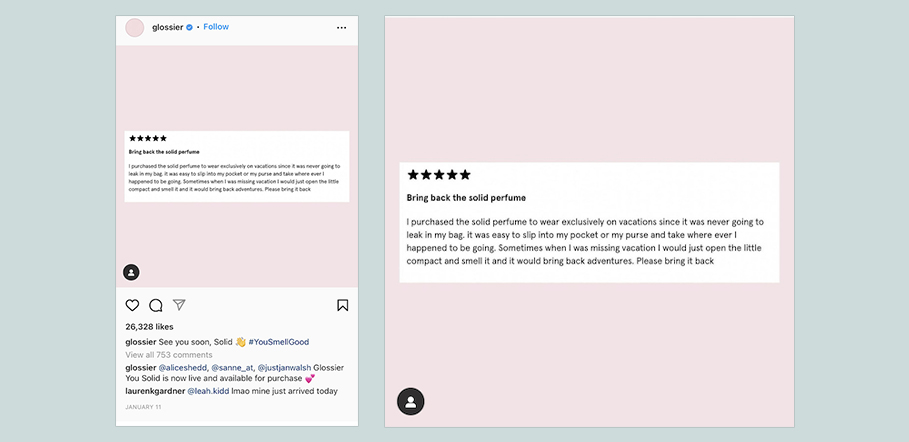
5. Glittering Generalities Propaganda
Also called sparkling generality, glittering generalities propaganda persuades the audience to support a notion, product, person or an idea to make it stand out in the crowd.
Advertisers incorporate fancy words into their copy to help the audience identify with a positive belief or desire. A few instances of such words include change, hope, justice, and possibility— these exude a positive vibe and create hype among the audience. However, remember that the services or products might not always show the results that the ads claim. But the advertiser influences the buying decision by triggering a positive reaction. Then. ”Note that glittering generalities may be projected successfully in the form of catchphrases, political campaigns, and positive slogans.” As such, the ad copy should appeal to the audiences’ emotions and ultimately create a lasting impression.
Recognized USA beauty brand Proactiv put forth some ads for its popular face wash showcasing testimonials of teenage users as well as contemporary celebrities.
This made the ads realistic and engaging while also solidifying their target audience. Plus, the tagline using the brand name with a pun in one of the ads made it all the more interesting.

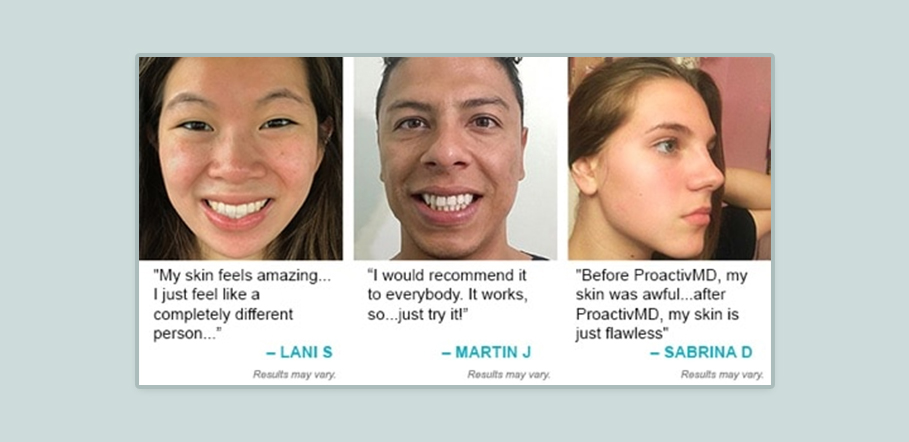
6. Transfer Propaganda
Transfer propaganda ads link the good or bad association of an audience to an entirely unrelated concept.
Simply put, this propaganda technique transfers emotions from one individual to another. Symbolism plays a decisive role here, as it pushes the audience to establish a connection to the said product or service. Plus, some of these ads connect your apprehensions or fear with a product or service that can drive away the fear. Lots of brands have experimented with the transfer technique to enhance customer engagement.
To understand how this propaganda works, let’s see how a restaurant serving vegan food can advertise itself using this technique.
It can utilize marketing techniques that are ineffective in driving people to restaurants and can later mention that it serves vegan foods. For people who’re vegan, such an ad will trigger a desire to explore the restaurant.
A real-life example of this propaganda technique is an ad by Dodge Challenger which showcases a larger-than-life concept to draw potential customers. In this ad, the first President of the USA George Washington is depicted as driving a vehicle on a battlefield while waving a flag when the adversary starts fleeing.
By displaying the President and the American flag along with the Dodge Challenger, the ad uses the transfer technique to bring the vehicle into focus.

7. Plain Folks Propaganda
Simple anecdotes can, at times, trigger your audiences’ emotions considerably and may even drive them to make a purchase. The plain folks propaganda technique makes use of this power and projects regular people in its ads to demonstrate that they value the service or product.
Thus, advertisers convey that the service or product exudes a universal appeal. Till a few years ago, celebrity endorsements were seen as the primary source of product sales. Fast forward to today, the trend of leveraging real-life examples for advertisements is becoming increasingly popular.
Take a look at this old Pennsylvania Lottery ad that showed citizens chuckling as they heard carolers singing to initiate the Christmas lottery games.
The realistic portrayal of common people looking forward to a festive season lottery along with the use of a catchy jingle garnered much appreciation from all corners.
I’d also like to cite an intriguing ad by Helman’s that uses the photo of a sweet little girl to project the value of simple and healthy living.
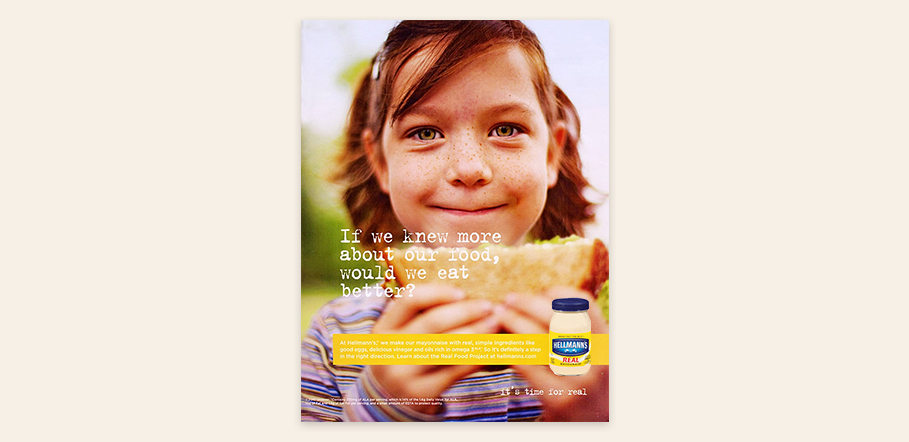
8. Fear Appeals Propaganda
As the term suggests, this propaganda scares people into either refraining or engaging in a particular activity. Such ads use text and/or images to implicitly evoke concern or fear in the viewers’ minds.
That said, the use of strong images can, at times, make fear appeal advertisements more eye-catching. An anti-smoking ad might be scary. But then, it presents a clean way to be free from the fear of developing health complications. Imagine— if washing powders were promoted by celebrities, would you have bought that? To make the ads more believable, they should feature real consumers who have used the product and have liked it.
Below is a noteworthy example of an advertisement for Royal Jordanian airlines with the tagline “Are You Afraid Of Flying?” A man is shown to be reluctant to fly lest he faces discrimination in the aircraft.
In the end, the ad appeals to people not to be afraid of saying no to such practices, thereby shedding light on the importance of an accepting environment in the company’s aircrafts. It’s also worth noting that not all ads using the fear appeal technique push viewers to engage in a monetized activity.
9. Ad Nauseam Propaganda
Ad Nauseam propaganda technique has gained much popularity in recent times, especially in internet advertising. This technique exploits the immense potential of repetition, targeting audiences at high frequencies to arouse their interest.
In fact, the principles of psychology state that it’s in human nature to develop a preference for things see or hear repeatedly, just out of a sense of familiarity.
The leading web development company Wix has been successfully utilizing this tactic for a long time. It repetitively airs the best of its commercials on YouTube and most other social media platforms to ensure maximum impact.
10. Name Calling Propaganda
Last but not least, the name calling propaganda technique sees a brand trying to downplay its close competitor to attract customers from the latter. The technique involves linking a particular product or person to a negative symbol so that the audience is influenced to reject them instead of checking the facts.
The ad shown below promotes a pack of MSG-free chicken noodles by contrasting the product with its close competitor which has MSG. Ultimately, the onus is on the customers as to whether they’d go for a healthier option or not.
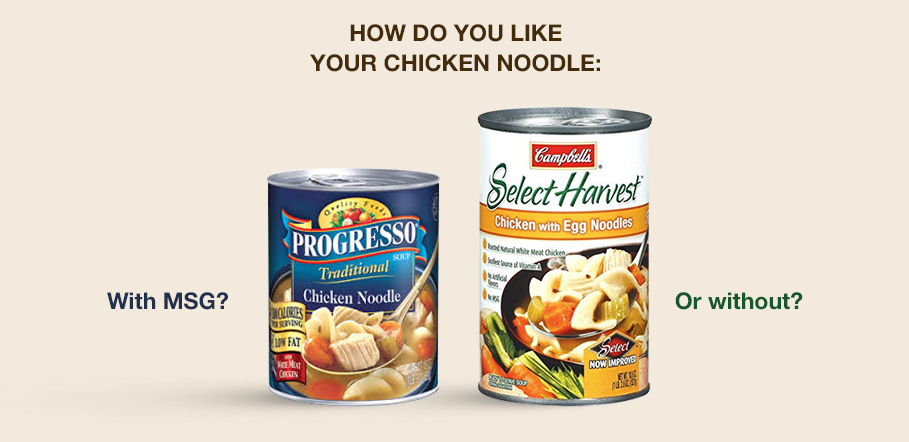
Another instance of name calling is an ad for the XBOX 360 Elite that uses the idea of “being a wimp” to create a negative impression of competitors like Nintendo’s Wii.
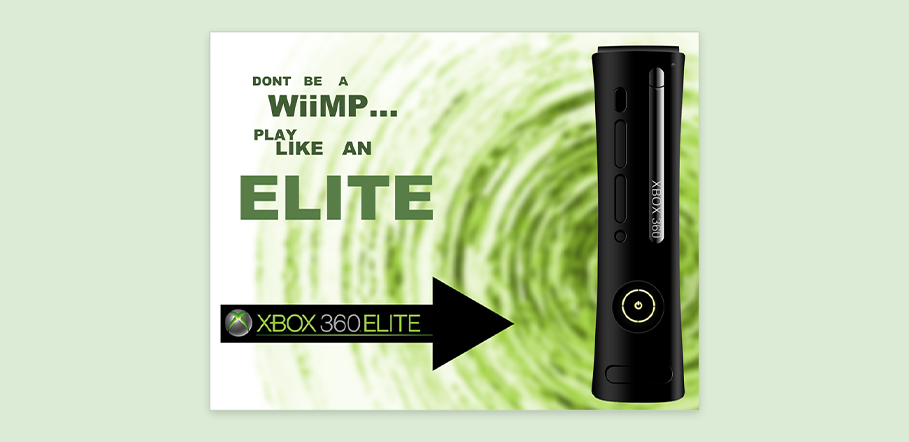
Negative Impact of Propaganda In Advertising
While propaganda techniques can work wonders for a business, not using them wisely will land you in trouble.
An ad making exaggerated or deceptive claims is a glaring example of modern-day propaganda gone wrong. Often, customers who make buying decisions based on such ads get results far from what they expected and vent their dissatisfaction through various communication channels. This renders the whole campaign futile.
The media creates a wrong impression among ordinary folks that perfection is achievable. Such negative opinion, in turn, causes a business to suffer losses.
Such flawed perception of propaganda may have an emotional and personal effect on many people and ultimately lowers their self-esteem. Moreover, when businesses manipulate information and events to meet their own selfish needs, they become difficult to trust.
So, both the advertisers and the audience should steer clear of such misinformation spread in the name of “advertising”.
The makeup and beauty brand Rimmel once came up with a mascara ad featuring actress Cara Delevingne which made her eyelashes look too voluminous. Eventually, the Advertising Standards Authority (ASA) banned the ad claiming that it might have used post-production techniques or lash inserts to achieve such an effect.
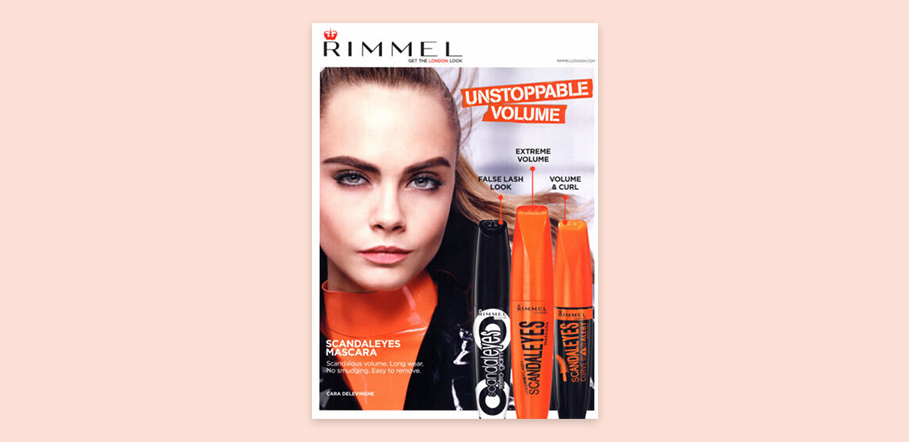
FAQs
1. Which is the most widely used propaganda technique in advertisements?
Card stacking is currently a quite popular propaganda technique in the advertising world. Many brands are choosing to stockpile or amass enough benefits of a product to trick consumers into disregarding its drawbacks.
2. Can propaganda be called a type of advertising?
Propaganda refers to the act of opposing, endorsing, or condemning an idea, a person, or a cause as a part of a specific goal. On the other hand, advertising is a collective term used for all activities carried out to achieve better sales figures for a service or product.
3. Which event marked the introduction of propaganda in corporate advertising?
Following World War II, American theorist Edward Bernays rebranded the term propaganda as public relations. He applied Sigmund Freud’s works on psychological motivations to transform how advertisers promoted consumer services and products.
4. How is propaganda different from publicity?
Propaganda aims to alter the public opinion on a particular idea, product, or service. Publicity campaigns present a stark contrast to this idea as they work to spread information on an individual or organization among their audience.
5. Can you use publicity and advertising together to have better impact on your target audience?
Yes, you can routinely publish neutral or positive news stories to spread awareness about what your brand offers. In such situations, complementary advertising works with news coverage to have a more positive effect on the attitudes of your target audience.
6. How do you know if an ad is manipulating?
Most of the claims in manipulation are expressed as incorrect arguments, half-truths, exaggerations of the product quality or emotional appeals. Note that exaggerations can sometimes be entirely false or might be expressed as puffery.
7. How do you analyze propaganda effectively?
You’ll have to consider aspects such as the attitudes, beliefs, and past behavioral patterns of the target audience while analyzing propaganda. Generally, messages that support the views of the majority of your audience turn out to be more effective.
Final Words
As you can see, there are types of propaganda techniques that play a key role in educating or informing people about issues that can impact their lives or environment.
If you are running a business, you’ll need to employ such techniques at some point in time to outperform your competitors. So, don’t delay analyzing how to make the best use of the different types of propaganda techniques to launch transformative campaigns for your business. If you have any queries or questions in mind, feel free to drop a comment below. See you next time!
Additional Resources:
- Geofencing Marketing: What Is It and How to Advertise with It?
- Everything You Need to Know about Franchise Marketing


